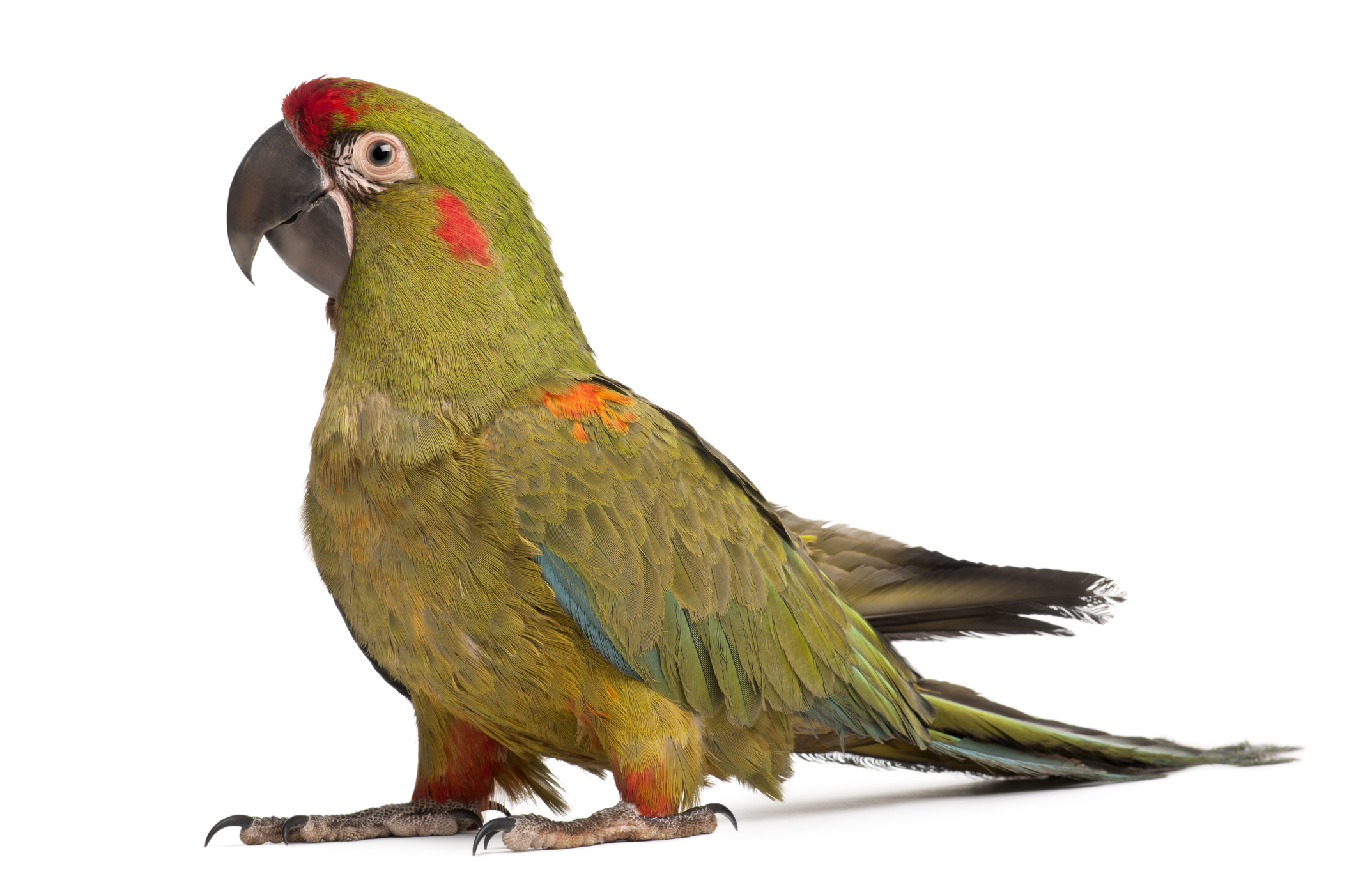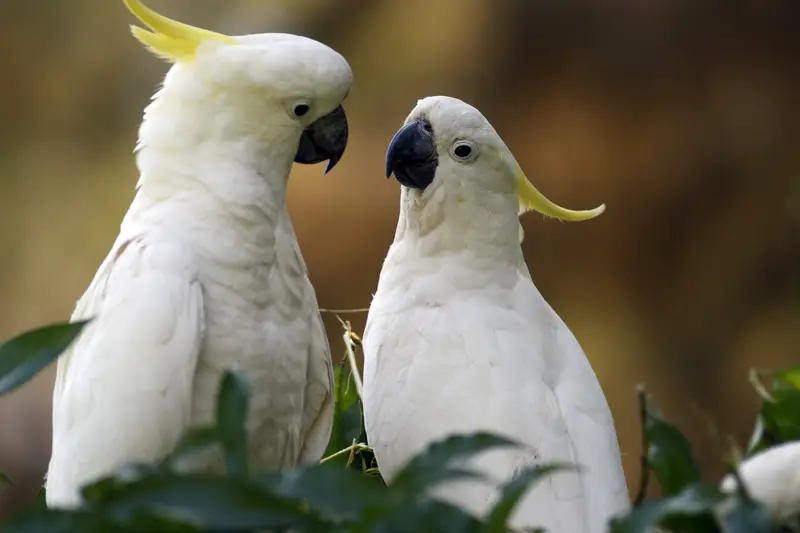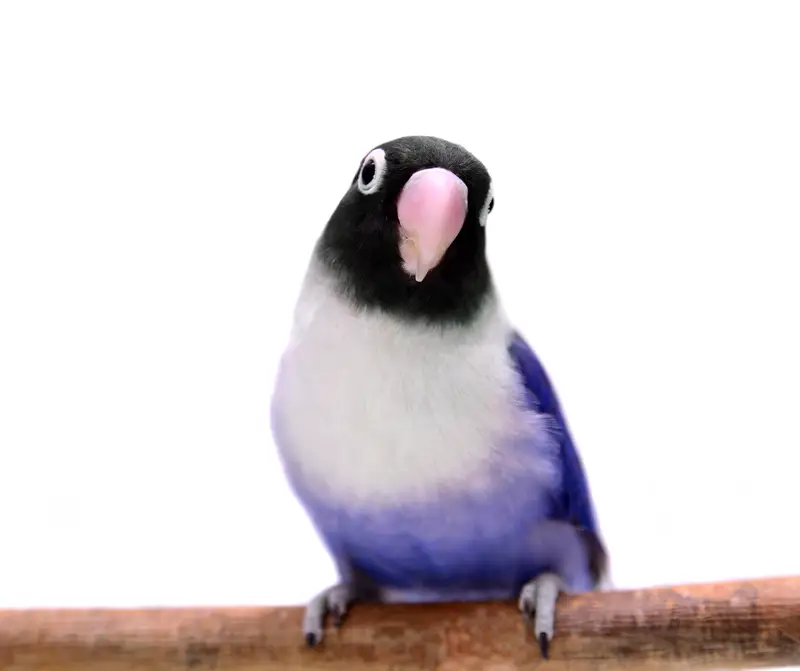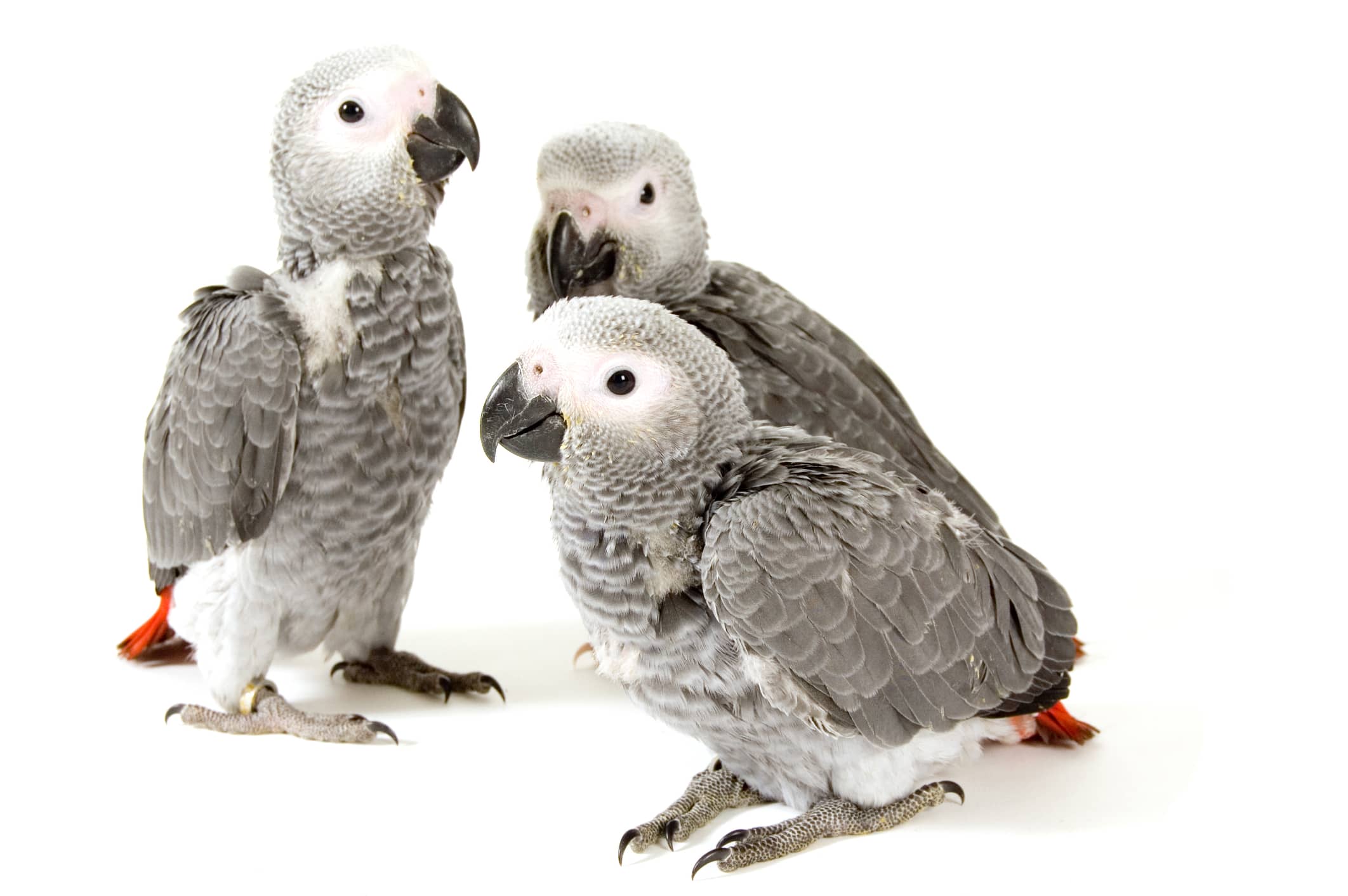Get to Know the Stunning Red Fronted Macaw: A Complete Guide
- VIParrot
- February 7, 2023
- 5:05 pm

Species Overview
Also Known As: Lafresnaye’s or Red-cheeked Macaw
Scientific Name: Ara rubrogenys
Adult Size: 22-24 inches
Life Expectancy: 50 years
Is The Red Fronted Macaw a good pet?
- Playful and fun personality
- Will show lots of affection
- Can be good talkers if they’re trained well
- Love to chew
- Must spend a considerable amount of time grooming the bird
- Can be very loud and not suited to apartment living
This endangered bird has thrived as a pet today. This is expected because the bird has a playful and fun personality. Red Fronted Macaws, like most large parrots, are happiest when they are free and allowed to display their active nature. Therefore, you should provide the biggest and most spacious cage that your budget can afford.
One mistake that many novice owners make is not providing chewing materials for these birds. They love chewing and you should provide materials that they can leisurely chew at.
As a Red Fronted Macaw owner, you must be ready to spend considerable time grooming the bird. You must bathe the bird regularly to maintain its good skin condition and plumage. To bathe them, you can take the cage outside and sprinkle the bird with a hose. You can leave them to dry out naturally in the sun or you can use a gentle blow dryer on the bird.
General Information
The Red Fronted Macaw, also known as the Lafresnaye’s Macaw and the Red-Cheeked Macaw. This bird is quite hardy, and as such can withstand tough situations. Let’s go over some of the features of these beautiful birds.
They weigh an average of just over a pound and originated in Bolivia. They are available as pets in the United States, but are considered endangered in Bolivia and are now illegal to capture and sell for the pet trade.
Their numbers are thought to be between 1000 and 4000 individuals in the wild. This is very small, especially considering that the laws against capturing the birds are being broken every day. In addition to the population being decimated by illegal capture for the pet trade, these birds are suffering from a diminished habitat.
One thing that makes these macaws unique among all of the varieties of macaw is their choice of nesting area. They live in areas with little access to large trees. There are many cactus and other brushy type plants and the trees that are available are small and lack a trunk large enough to accommodate a bird of this size for nesting. They instead nest in holes on the sides of rocky cliffs. Some Red-Fronted Macaws can be seen nesting in trees, but most will nest in cliffs.
If you are interested in seeing the Red Fronted Macaw in its native or most natural habitat, then you would have to take a trip to Bolivia. These birds are naturally found in a small area of the region. The Red Fronted Macaw became an endangered species due to the urbanization of its habitat and the indiscriminate killing of the bird. Fortunately, this bird has found new life in captivity and in people’s homes.
In its natural habitat, the Red Fronted Macaw feeds on readily available food sources such as seeds, palm nut seeds, cacti as well as buds and nuts. The primary reason the bird was targeted by farmers is that they often raid farms of peanuts and corn.
Their homes are being taken over by farmland and ranches. Fires are burning their lands as well. They live in dry thorny brush and dry subtropical woodland. They nest on rocky cliffs, such as those found around rivers. All of these areas seem to be great places for humans to lay claim for farming. Red-Fronted macaws also are dying from the pesticides used on the crops.
How do you know a Red Fronted Macaw when you see one? This is a question that we often come across, and for good reason especially because birds in the parrot family have a lot of similar features.
The Red-Fronted Macaw is primarily olive green in color. They get their name from the flashy red patches. They have red feathering on their forehead area, their ear area behind the eyes, the thighs, and a bit on their shoulders. The red on the shoulders is surrounded by orange and yellow. The wings, when open, reveal a brilliant blue. One significant difference between the adults and the juveniles is the orange-red color that is absent in the juveniles.
This same blue appears on the tip of the tail as well. Their eyes are orange and match the bird well. The face is pink and the bare area is not as large and most other macaws. The males and females look the same, so determining the sex of a bird must be done by a veterinarian. They measure about 2 feet from head to the tip of the tail. They are on the smaller end of the large macaws.
What food do they eat?
Their land is being taken, so they have less and less space to eat fruit and seeds in the wild territory. These wild fruit and seed trees are being cut down for crop land and urbanisation.
The birds have no choice but to eat the food grown on the cropland. The only way to save these birds from certain extinction is to educate the people of Bolivia about the importance of conserving their native species of animals. Their diet in the wild consists of seeds and nuts. However, in captivity, a pellet diet, supplemented with seed, fresh fruit and veggies, and other treats, is ideal.
At their growing stage, fat and protein can be added to their diet as they require more of them at this young age. When making a list of the food items to give these parrots, ensure you take care to not include chocolates and avocados as these food items can be toxic to the birds.
Price
Among the macaw family of parrots, the Red Fronted Macaw is averagely priced. You can get parrotlet for between $150 dollars and $350 dollars. For adult Red Fronted Macaws, the price could range from between $700 dollars to over $2000 dollars. Theycan be rescued, adopted, or purchased at verified organizations or adoption websites like Petfinder
If you want to choose a breeder, make sure that the breeder is reputable by asking them how long they’ve been breeding and working with Macaws. Ask for a tour, but don’t be alarmed if you are unable to tour the facilities in which they keep the birds. Many reputable breeders opt to work under closed aviaries, which prevents diseases from infecting the flock.
Training and Sound
Another reason why the Red Fronted Macaw makes for an excellent pet bird is the ease of training. These birds adapt very quickly to new environments as long as they get comfortable in that space. You should however give your new bird a few days to get used to its new surroundings, your voice, its cage, and so on before anyone starts handling the bird.
Training and taming a parrot requires a lot of patience and trust, so you need to be patient with your bird. You would start seeing positive results quickly because these birds are highly intelligent. You can even introduce a few words to the bird during its developing years.
In terms of sounds, macaws make sounds that match their presence. You may have to take their loud screeches and squawks into consideration when deciding on which pet to take in, especially if you stay in an apartment.They love human interaction and are great talkers, they can’t talk as well as Amazon parrots, but do a pretty good job. They do squawk pretty loudly though, so people that don’t like a lot of noise should think carefully before buying one of these birds. Like most macaws, they love to make their voice heard, especially in the morning and evening.
One of the qualities that easily endear these birds to people is their ability to produce sounds similar to human speech. Basically, they can mimic the sounds you make. From an early age, you can teach a Red Fronted Macaw a few words to repeat. They will start mimicking human conversations as they mature.
Lifespan and Breeding
Red Fronted Macaws can live as long as 50 years, which is quite long. This long lifespan makes them a great family choice, as the bird can stay in the family for many decades. If you are looking for a long-life pet for the family, then this bird is an excellent choice for you.
One of the reasons why the Red Fronted Macaw is a popular pet is because the bird breeds well in captivity. These birds nest once every year around October and April. When the Red Fronted Macaw lays its eggs, it’s usually in clutches of about 2 to 4 eggs. The eggs take about 26 days for the eggs to hatch. During the breeding season, add more fat and protein in their diets. In the wild, these birds come together in breeding pairs and it is not surprising to see both parents tending to their young.
How big are they?
Temperament
The personality and behavior of the Red Fronted Macaw are some of the factors that make it an excellent pet. When they are quiet, their beauty calls attention and when they are active, their fun and playful attitude does. They are also inquisitive, cuddly, and intelligent.
These birds love to have toys that they can chew on, especially one made of wooden material. In their natural habitat, these birds are very social animals. In homes or captivity, they are very intelligent and can be playful little clowns with a sprinkle of mischief. A Red Fronted Macaw may lunge toward people, not to scare them but for the reaction, it will get from them.
The bird is a great family bird that will get along with everyone. Don’t be surprised when you notice your pet has a favorite member of the family. The Red Fronted Macaw can also sometimes mirror your mood. So be careful when you are agitated and your favorite pet is watching.
You must introduce your bird to all the members of the family as well as lots of other folks while it’s growing to sharpen its social characteristics. This is to make the bird more comfortable around everyone and avoid your pet preferring one member of the family or a set of people.
A Red Fronted Macaw left in the garden can often be seen digging the dirt because of its high level of inquisitiveness.
Another thing to always put in mind when caring for a Red Fronted Macaw is that they can be quite loud. This is usually pronounced when your bird feels lonely and neglected. A Red Fronted Macaw needs constant attention as a pet, so if you want to avoid your bird disturbing your neighbors, give it the desired attention it requires.
Common Diseases
To enjoy these pets and help them live long and active lives, it is essential that you understand their health and how to care for them. Generally, the Red Fronted Macaw is a hardy bird. It adapts easily to new conditions and the bird can endure some harsh conditions. This pet is also known for its good health. You don’t have to worry about frequent illnesses, as long as your bird eats and exercises well.
For optimal condition, ensure you watch out for cold temperatures and extreme heat. These birds may struggle a bit in these conditions. Good feeding habits, as well as a consistent breeding habit, will keep your pet far away from diseases. Other ways to prevent diseases are exposing your bird to sunlight and providing enough room to move around freely in.
Although you can reduce the chances of your pet getting sick by keeping healthy practices, there are still some illnesses that Red Fronted Macaws are susceptible to. Now, when it comes to illnesses, there are some differences when talking about juveniles and adult birds.
For juveniles, you may find any of the following:
– Chewing of tail feathers and flight feathers
– Beak Malformation
– Constricted toe syndrome
Now, going to adult birds, you may find any of the following among them:
– Aspergillosis
– Gout
– Kidney disease
– Psittacosis
– Pancreatitis
– Bacterial, fungal, and viral infections
– Metal poisoning
– Macaw wasting disease.




